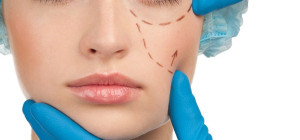People are attracted to beauty whether it is in the form of a well-shaped curvy lady or a flash of a gorgeous bright white smile. We are drawn to these pleasing features in others as reported in a study published in the journal PLOS One.
It is not surprising then, that, tooth whitening is among one of the most requested cosmetic treatments ever. Fortunately, mostdental clinics offer the service.
But first, what is tooth whitening?
Tooth whitening is a straightforward, non-invasive dental procedure that removes discoloration and stains from the teeth.
Bear in mind however that tooth bleaching is not a permanent one-off treatment to remove stains from the teeth. You will have to undergo regular touch-ups. Although, the frequency of these touch-ups depend on your lifestyle and habit. So, you might have to book an appointment every three months, or after six months or even yearly to maintain your bright smile.
A little background about your tooth
The hard outer layer of your tooth is called the enamel. It is the part of your tooth you desire to whiten.
Several factors affect the natural look of your enamel. They include such elements like your genetic make-up, smoothness of the enamel, how the enamels reflect and scatter light and the color of your dentin (dentin is the part of your tooth found immediately after the outer layer of the tooth)
Your genes determine how smooth and thick your enamel is going to be. Thinner enamel causes the dentin to show through leading to discoloration. And a smoother or rougher enamel surface also affects how lights are reflected off your teeth hence changing its color.

What cause tooth stains and discoloration?
Apart from the factors listed above there are several other factors which can lead to stained teeth and discoloration, they include:
Use of tobacco – tobaccos is made of compounds that get deposited on the teeth surfaces and crevices in the mouth which accumulates if used for an extended period. This accrued grime over-time discolors the teeth and in extreme cases, calcifies or leads to teeth plague.
Regular drinking of colored beverages like coffee, cola, and tea or a constant intake of red wines could also stain the teeth.
Poor oral hygiene – what do you expect when you don’t take adequate care of your teeth? Every day, through the activities of bacteria in the mouth, pellicles (a thin coating) forms on the enamel which without proper oral care picks up stains.
Aging – Old age has been linked to a discolored tooth, this is because your enamel gets thinner while the dentin becomes darker. This invariably leads to a less bright dentition.
Use of medicine – there are some medicines such as tetracycline which when taken by a pregnant woman or administered to an eight-year-old or younger child could lead to stains on the teeth.
These kinds of discolorations are known as intrinsic discoloration since they occur inside the enamel.
Trauma could also lead to a darken teeth.

What you should know before bleaching your teeth
- Bleaching is ineffective on veneers, ceramics and porcelain crowns – so if you have any of these artificial fittings, you probably have to consider going to see your dentist to get new ones to avoid having uneven color shades.
- If you’re suffering from receding gums, it is essential to keep in mind that the exposed tooth root may be stained and bleaching will not remove it.
- Bleaching your tooth could increase its sensitivity.
Preparing for a teeth whitening procedure
First step: Your dentist takes a picture of teeth this way they are able to keep track of the progress made in whitening your teeth.
Second step: your dentist or a dental hygienist cleans your teeth to remove any food particles and debris from your mouth.
At the end of this stage, the whitening procedure starts.
The whitening procedures
Using teeth whitening pastes
This is the most common whitening process and is usually carried out at home. Just as you have your toothpaste, there is also whitening toothpaste available you can use to boost your smile.
Most whitening pastes contain a higher amount of hydrogen peroxide than the regular toothpaste which enables them to brighten the teeth. It is essential to keep in mind also, that these pastes are not changing the teeth color, but instead, they are removing stains from the enamel.
Using gels and strips
The gels contain a high amount of hydrogen peroxide which makes them more efficient than whitening toothpaste. However, it is recommended to seek your dentist’s opinion before using these products. This is to prevent damage to your gums and teeth.
To use the gel, apply the gel on your teeth using a small brush. You are probably going to start seeing some changes after a few days.
The use of strips is similar except that in this case, the gel is applied on the strips and then fitted on the teeth to hold the gel in place and in contact with the teeth.
For best results, use the strip two times daily for thirty minutes over a two weeks period.
Teeth bleaching
If you desire instant teeth whitening with a long-lasting effect, then consider getting a professional dental teeth whitening procedure.
The dental gels used by dentists are stronger than the gel and strips you’d find over the counters. It contains between fifteen to forty-three percent of hydrogen peroxide. Before beginning the procedure, your dentist will protect your gum using gum buffer.
Depending on how severe the discoloration is or how white you desire your teeth to be, you may require several appointments to achieve the desired shade.
However, keep in mind that the results are long-lasting and you could stay as long as a year before needing another touch-up.







